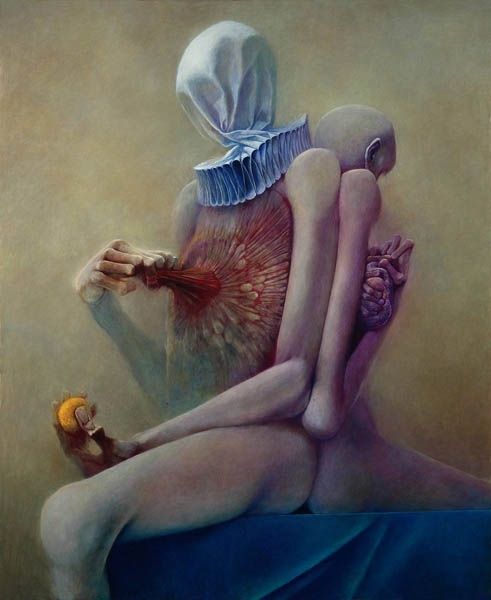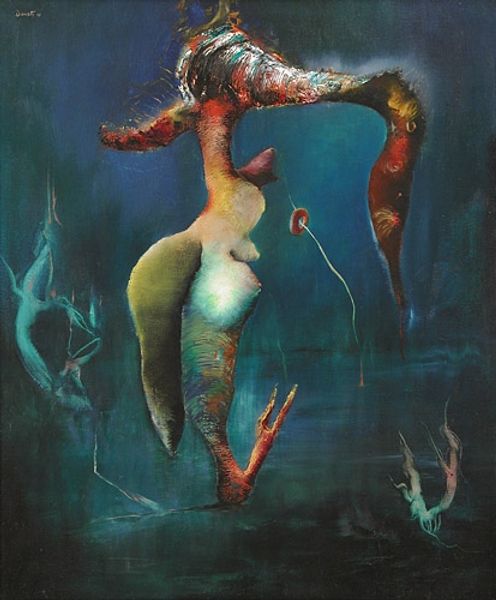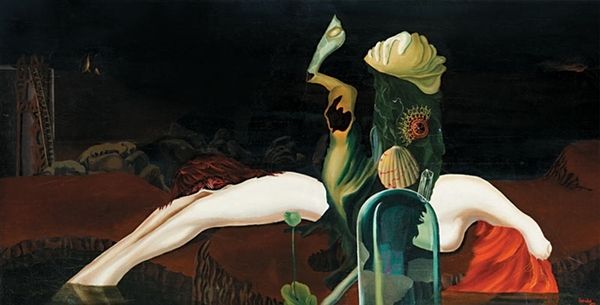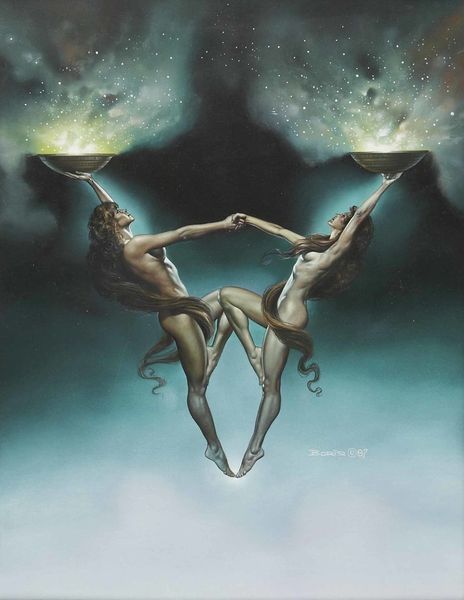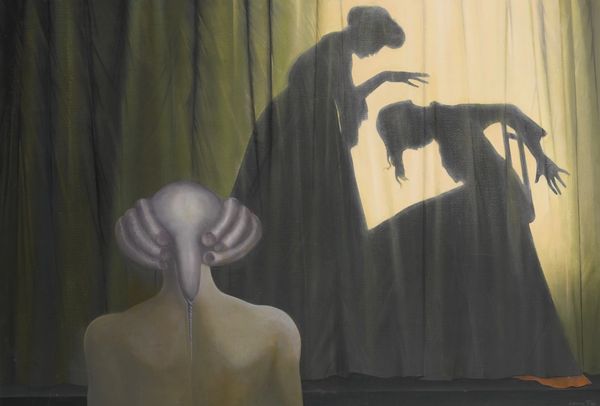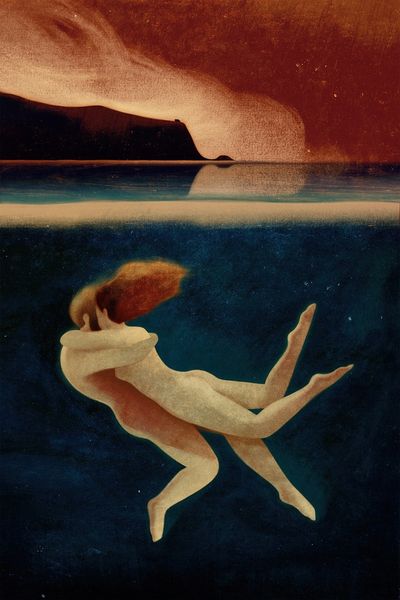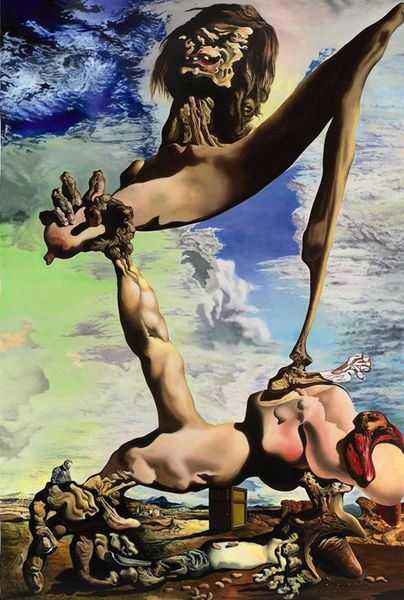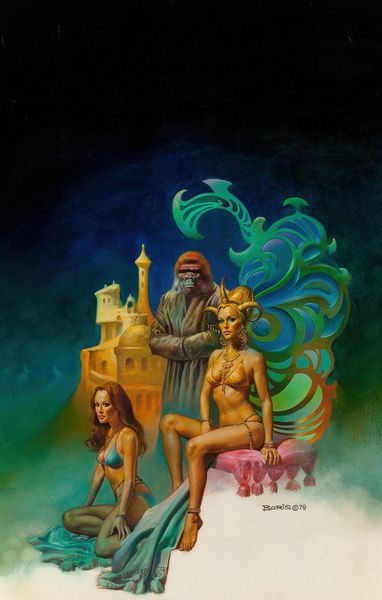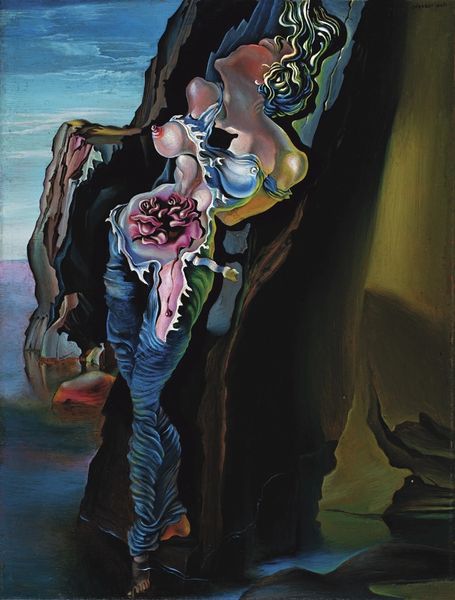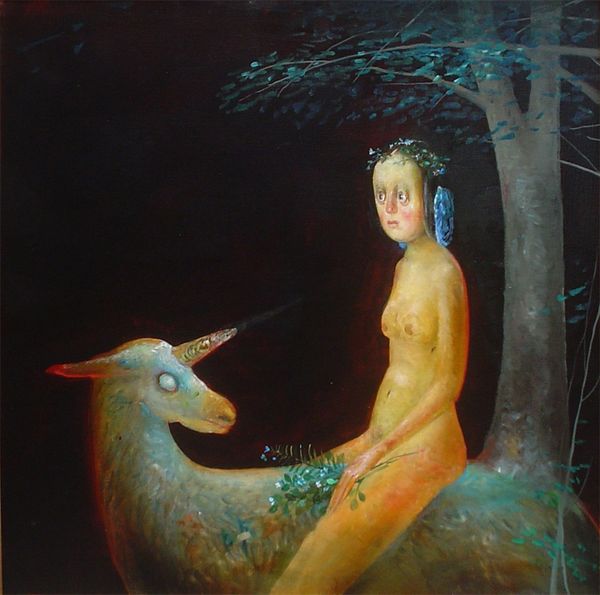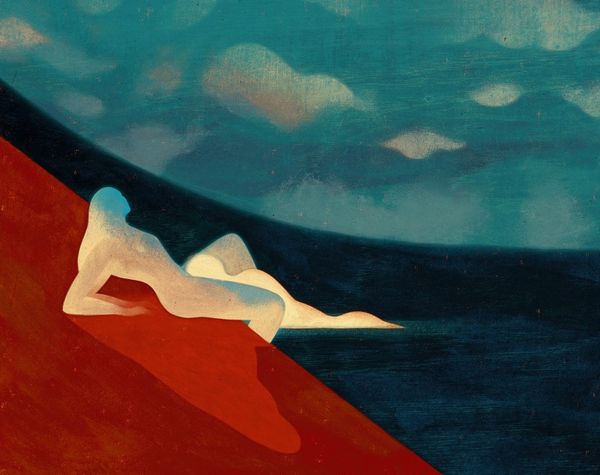
painting, oil-paint
#
fantasy art
#
painting
#
oil-paint
#
landscape
#
fantasy-art
#
figuration
#
history-painting
#
surrealism
Copyright: Modern Artists: Artvee
Editor: This is "Le Chevalier de la Mort" or "The Knight of Death," an oil painting by Salvador Dalí from 1934. There's something ethereal about it, like a dreamscape populated with figures that are both present and fading away. How do you interpret this work, particularly its symbolism? Curator: Immediately, I’m struck by how Dalí utilizes enduring symbols – the horse, often linked to power and movement, and the knight, representing chivalry or conquest, but here, they’re tinged with fragility, almost spectral. Notice the sphere the figure offers— what do you make of that object held aloft? Editor: It looks like a crystal ball or perhaps an orb representing the world? Curator: Precisely! Consider the orb as a symbol of totality, a world held within a hand, almost as if offering fate itself. Now look at the ghostly figure in the background, seemingly shrouded. This tableau is rich with Jungian archetypes; think about death as not merely an end, but a transition, a psychic boundary. Do you find a sense of dread or something more nuanced? Editor: I initially felt dread, but now, seeing how delicately the figure presents the orb, it feels more like an acknowledgement, even an offering, than a threat. It’s as if Dalí is exploring the psychological landscape of mortality. Curator: Indeed, the continuity of symbolic forms through ages echoes humanity’s attempt to grapple with existential questions. Dalí presents death as a surreal ceremony, a visual poem about the cyclical nature of life and the enduring power of symbols to convey complex emotions. What an insightful revelation this image provides! Editor: I agree. This piece makes mortality seem more approachable, like a part of life rather than something to fear. Thank you for opening my eyes to the rich layers of symbolism.
Comments
No comments
Be the first to comment and join the conversation on the ultimate creative platform.
